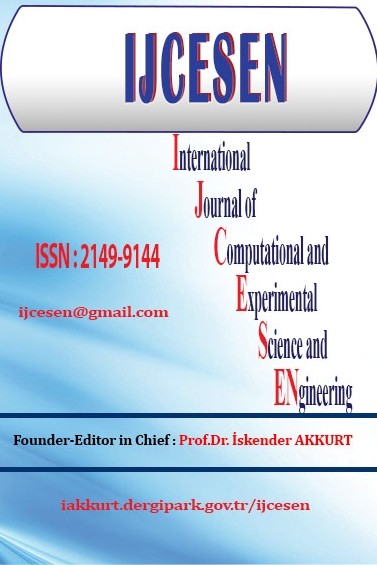A Project Management Model for Investigation of a Construction Project
A Project Management Model for Investigation of a Construction Project
Project Management, PERT, Project Crashing, Construction Sector,
___
- [1] W. Winston, Operations Research Applications and Algorithms, 4th ed., 2003.
- [2] N. Ibadov, Determination of the Risk Factors Impact on the Construction Projects Implementation Using Fuzzy Sets Theory, Acta Physica Polonica A 130(2016) 107-111. 10.12693/APhysPolA.130.107
- [3] L.O. Ugur, A Neuro-Adaptive Learning (NAL) Approach about Costs of Residential Buildings, Acta Physica Polonica A 132(2017) 585-587. 10.12693/APhysPolA.132.585
- [4] A. Recioui, Design and Thinning of Linear and Planar Antenna Arrays Using a Binary Teaching Learning Optimizer, Acta Physica Polonica A 130(2016) 7-8. 10.12693/APhysPolA.130.7
- [5] S. Foldes, F. Soumis, PERT and crashing revisited: Mathematical generalizations, European Journal of Operational Research 64(1993) 286-294. https://doi.org/10.1016/0377-2217(93)90183-N
- [6] M.F. Shipley, A. Korvin, K. Omer, BIFPET methodology versus PERT in project management: fuzzy probability instead of the beta distribution, Journal of Engineering and Technology Management 14(1997) 49-65. https://doi.org/10.1016/S0923-4748(97)00001-5
- [7] S. Gümüsoglu, H. Tütek, An analysis method in project management using primal-dual relationships, International Journal of Project Management 16(1998) 321-327. https://doi.org/10.1016/S0263-7863(97)00057-4
- [8] G.Y. Abbasi, A.M. Mukattash, Crashing PERT networks using mathematical programming, International Journal of Project Management 19(2001) 181-188. https://doi.org/10.1016/S0263-7863(99)00061-7
- [9] T. Yang, Performing complex project crashing analysis with aid of particle swarm optimization algorithm, International Journal of Project Management 25(2007) 637-646.
- [10] D. Trietsch, K.R. Baker, PERT21: Fitting PERT/CPM for use in the 21st century, International Journal of Project Management 30(2012) 490-502. https://doi.org/10.1016/j.ijproman.2011.09.004
- [11] F. Cebi, I. Otay, A fuzzy multi-objective model for solving project network problem with bonus and incremental penalty cost, Computers & Industrial Engineering 82(2015) 143-150.
- [12] B.H. Tabrizi, S.F. Ghaderi, A robust bi-objective model for concurrent planning of project scheduling and material procurement, Computers & Industrial Engineering 98(2016) 11-29.
- [13] A.H.I. Lee, HY. Kang, TT. Huang, Project management model for constructing a renewable energy plant, Procedia Engineering 174(2017) 145-154. https://doi.org/10.1016/j.proeng.2017.01.186
- [14] B.G. Soto, A. Rosarius, J. Rieger, Q. Chen, B.T. Adey, Using a Tabu-search Algorithm and 4D Models to Improve Construction Project Schedules, Procedia Engineering 196(2017) 698-705.
- Yayın Aralığı: 4
- Başlangıç: 2015
- Yayıncı: Prof.Dr. İskender Akkurt
Engineering Properties of Eğirdir-Kızıldağ Harzburgitic Peridotites in Southwestern Turkey
Big data Analysis in Plant Science and Machine Learning Tool Applications in Genomics and Proteomics
Jalil NOURMOHAMMADİ KHİARAK, Rana VALİZADEH-KAMRAN, Ahmad HEYDARİYAN, Najmeh DAMGHANİ
A Project Management Model for Investigation of a Construction Project
Murat ÇOLAK, Şeyma KESİK, Utkan MUTMAN, Gülşen AYDIN KESKİN
Huseyin Ozan Tekin, Baris CAVLI, Elif Ebru ALTUNSOY, Tugba MANICI, Ceren OZTURK, Hakki Muammer KARAKAS
Exact Stochastic Sşmulation Algorithms and Impulses in Biological Systems
Derya ALTINTAN, Vilda PURUTÇUOĞLU
Influence of Spinning Parameters on thin and thick Places of rotor spun yarns
Josphat MWASIAGI, Jacquirine MIREMBEL
Fracture Interaction during Temporarily Plugging Staged Fracturing
Wang BO, Zhou FUJIAN, Hu JIA, Gao LIYANG, Yuan LISHAN, Wang YUE
